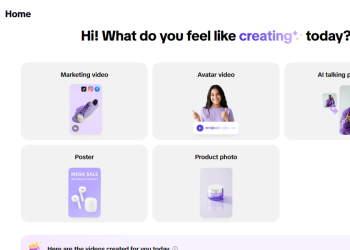Data protection and data privacy are often used interchangeably, but there is a crucial distinction between them. Data privacy determines who can access data, whereas data protection includes tools and policies to restrict access. Compliance regulations ensure that user privacy requests are fulfilled by companies, which are responsible for safeguarding private user data.
Data protection and privacy primarily apply to personal health information (PHI) and personally identifiable information (PII), playing a crucial role in business operations, development, and finances. By protecting user data, companies can prevent data breaches, safeguard their reputation, and ensure compliance with regulations.
Practices to Protect Your Data
#1 Prevent data loss
If we focus on the media’s sensational information, it could be easy to believe that the primary cause of data loss is skilled, professional black-hat hackers carrying out cyberattacks. However, that is far from the truth. The majority of data breaches occur due to human error, rather than malicious activities. When we examine the most significant historical cases, considering data collected from Wikipedia, the two most common causes are hacking and poor security. The poor security category includes situations where data was left unencrypted in an unprotected database without any authentication. This data was essentially waiting to be accessed. As we look further down the list, sorted by the number of records, we come across instances of accidentally published information, lost or stolen media, and even inside jobs. While major security breaches like the Capital One breach might involve intentional actions, the majority of data loss is a result of preventable mistakes that can be addressed through the implementation of automation-based safeguards, not only against hacking but also against carelessness.
#2 Use encryption wherever possible
Two decades ago, encrypting information was a rare occurrence and mostly associated with transmitting secrets. But today, we live in an era of data portability, where almost every data transmission is encrypted. For instance, most web pages you visit nowadays use SSL/TLS (HTTPS) connections, ensuring that nobody can eavesdrop on the communication between your browser and the website or web application. Email servers and instant messaging platforms also enforce encryption and provide options for automatically erasing messages after a selected period of time.
However, despite the availability of these mechanisms, not all of them are enforced. Some websites still allow unencrypted data transfer, and email content is rarely encrypted. There are even messaging platforms that rely on third-party channels for encryption. That’s why it’s crucial to enforce encryption whenever possible, especially if you suspect that sensitive information might be included in your data collection.
To guarantee the online security of user data, you should choose a cloud service with a powerful protection system. You can use a foreign service, even if you have to access it through a VPN. With VeePN, you can increase your organization’s resilience to hack attacks, change the country in the Play Store, or protect your data from being intercepted in transit. VeePN offers 256-bit encryption, which is a military-grade standard that cannot be hacked.
AdFixus also recommends using first-party cookies instead of third-party ones. The former will give your business full autonomy over your users’ data, giving you more control over how to better protect them.
#3 Monitor all potential sources
Sensitive information is not always found in one place. It’s unlikely that you’ll find credit card numbers in text files on an employee’s hard drive, but it’s more common in other cases involving personal data processing. Personal data, like someone’s date of birth, is just as protected as credit card numbers. If you lose social security numbers or other Personally Identifiable Information (PII), or if you can’t delete personal data when requested, you can face significant fines from data protection authorities. Many organizations are unaware that current cybersecurity technology can identify sensitive information based on its structure. By using a data profiling solution, you can implement privacy protection and identify sensitive data before it’s sent over insecure channels like social media. Users may not realize that certain data, like health information or biometric data, is sensitive, but a smart IT solution won’t make that mistake.

#4 Consider all possible sources of data leakage
Nowadays, it’s hard to imagine an organization that doesn’t use antivirus/anti-malware solutions on all their devices. This type of protection has become the standard for a while now. Additionally, a network without a firewall is unheard of, and educating staff about the dangers of phishing has become common practice for almost every organization. However, there are still businesses and institutions that haven’t gone beyond these basic protection methods. Surprisingly, many businesses overlook web interfaces and common endpoint activities like chatting, emailing, posting on social media, or using USB sticks to transfer data, as potential sources of data leakage. Although companies may have strict rules regarding information access, they often have zero control over the data shared through messaging apps, email, or attached devices. Without preventive measures, a careless internal user could accidentally share sensitive data with the wrong person or unknowingly post it as a comment on LinkedIn. In the absence of sufficient data privacy protection, a malicious internal user might intentionally send sensitive data to their personal email address.
Conclusion
If you don’t want to risk your reputation, don’t risk user data. This task requires an integrated approach, but it is interconnected with the trust of users. Once broken trust is very difficult to restore in the future. Plus, it is fraught with fines and other financial losses. For these reasons, protecting user data is something you should care about and prioritize.







